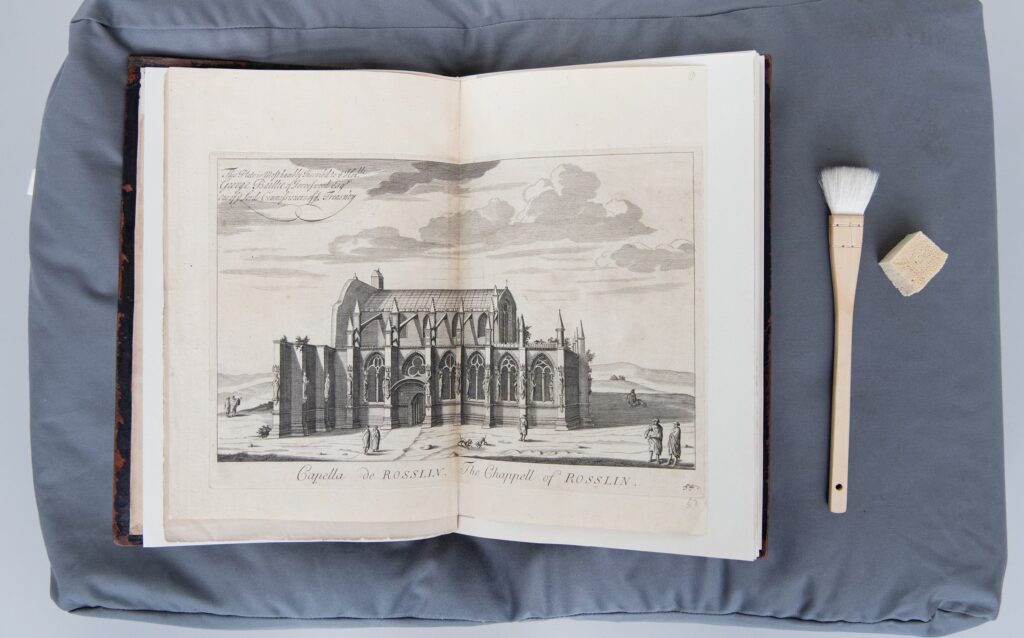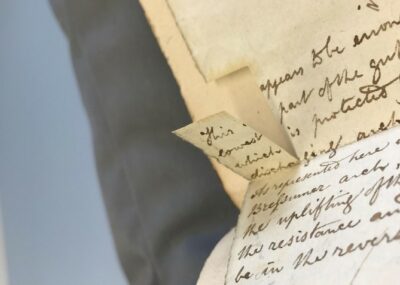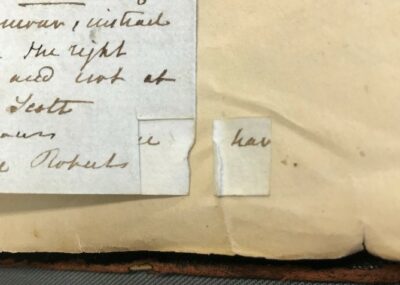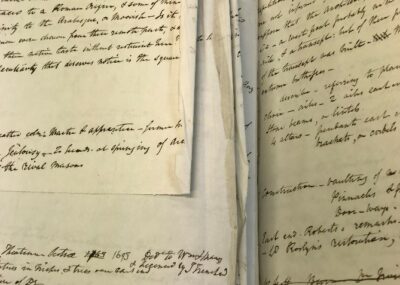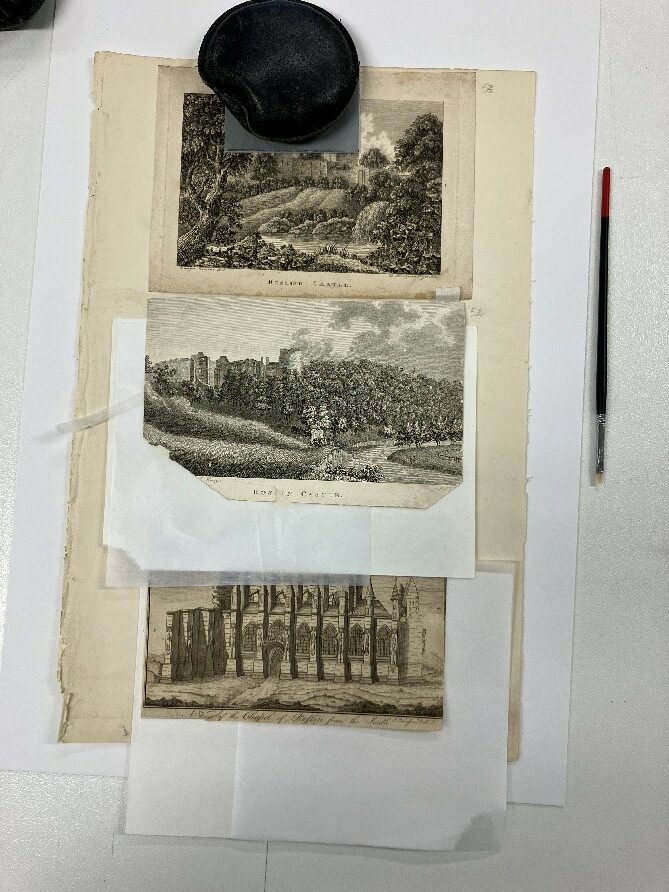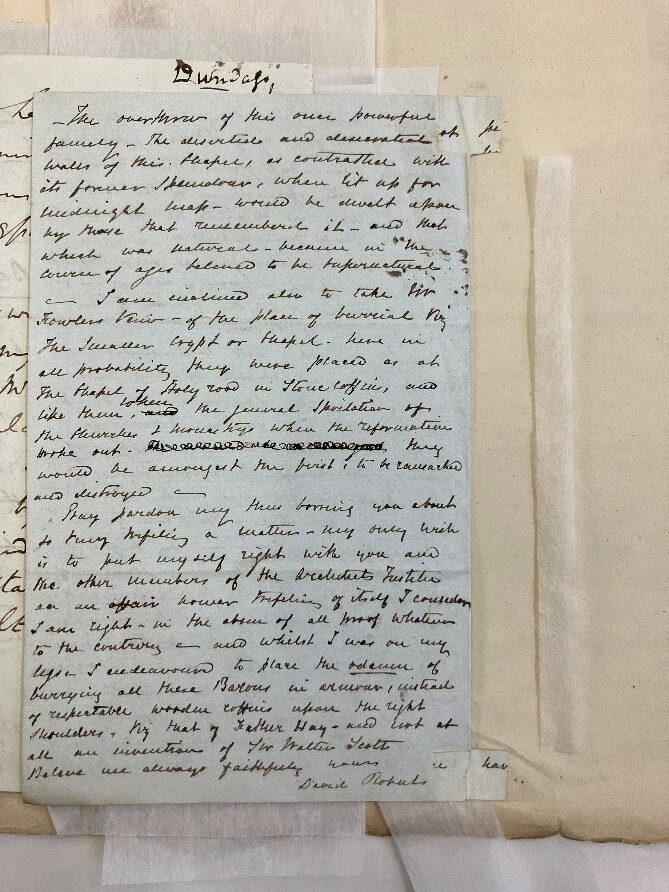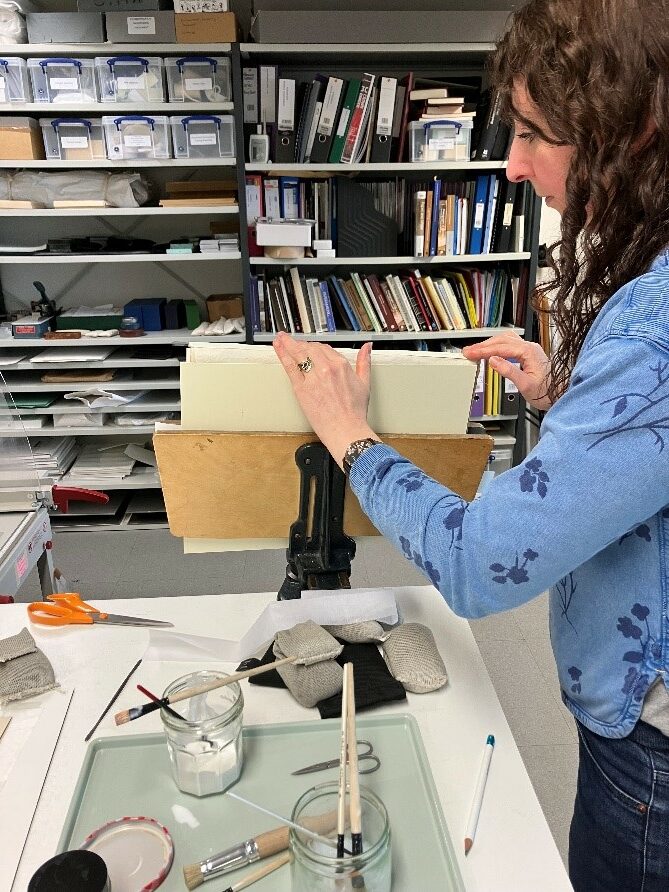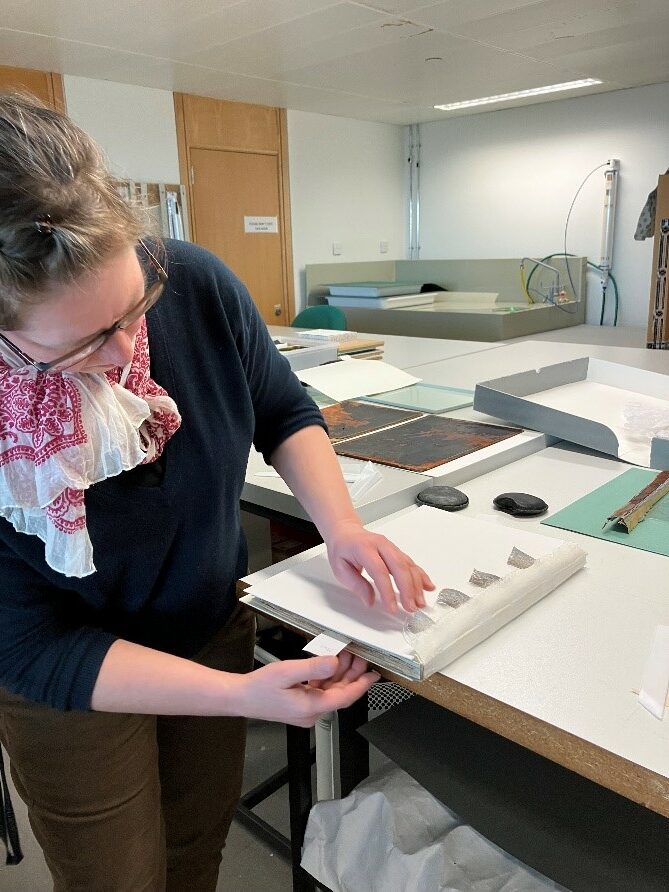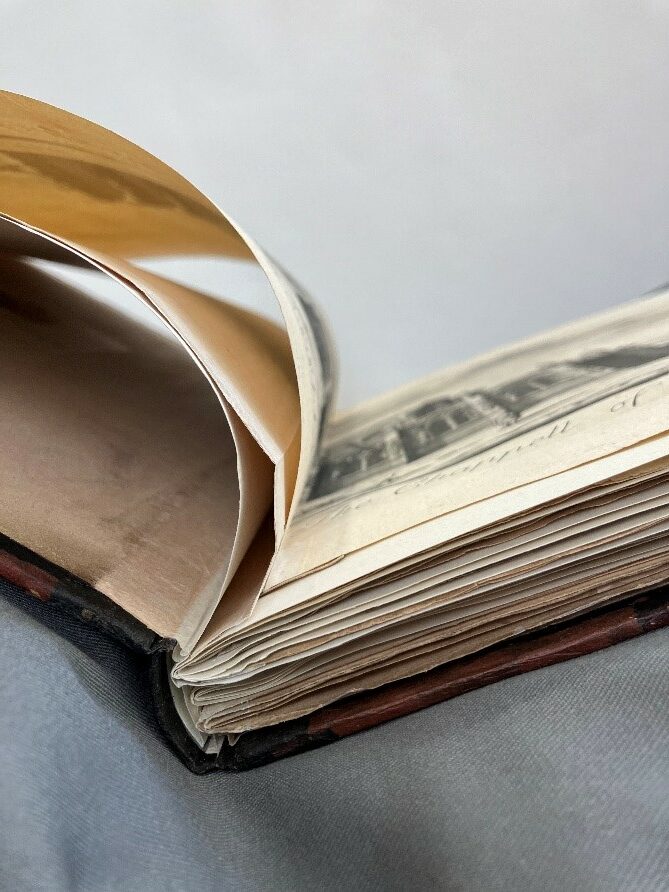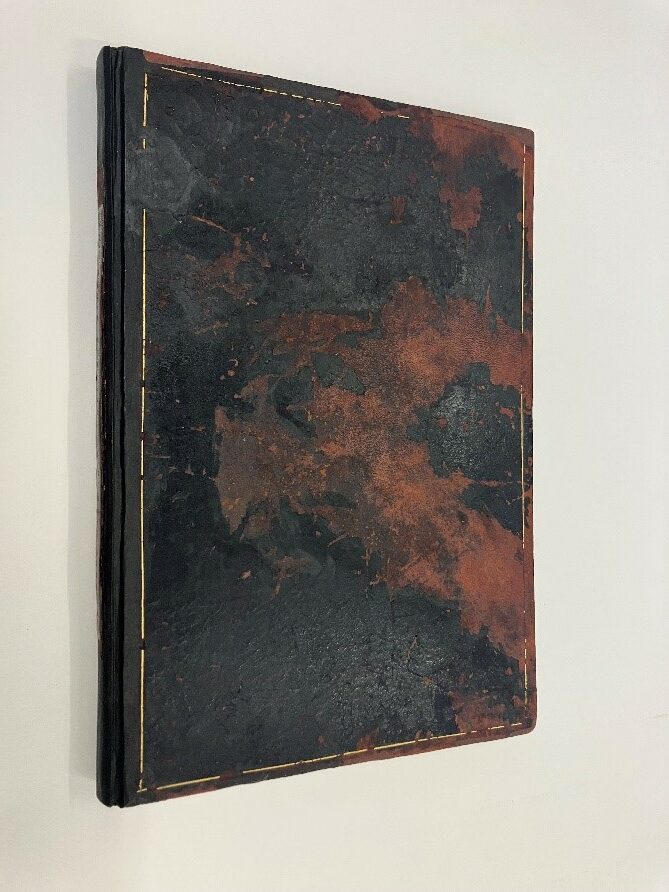Rosslyn Chapel, also known as the ‘treasure in stone’ stands in Midlothian, south of Edinburgh. Sir William St Clair founded the chapel in 1446, but it took over 40 years to complete it. The beauty of the chapel and the mysterious symbolism of the stonework have drawn artists, writers and visitors ever since.
After the reformation, the chapel fell into disrepair and in 1650 Cromwell’s troops attacked it and stabled their horses there. Following a period of Victorian repair and restoration, the chapel was rededicated in 1862 and services resumed.
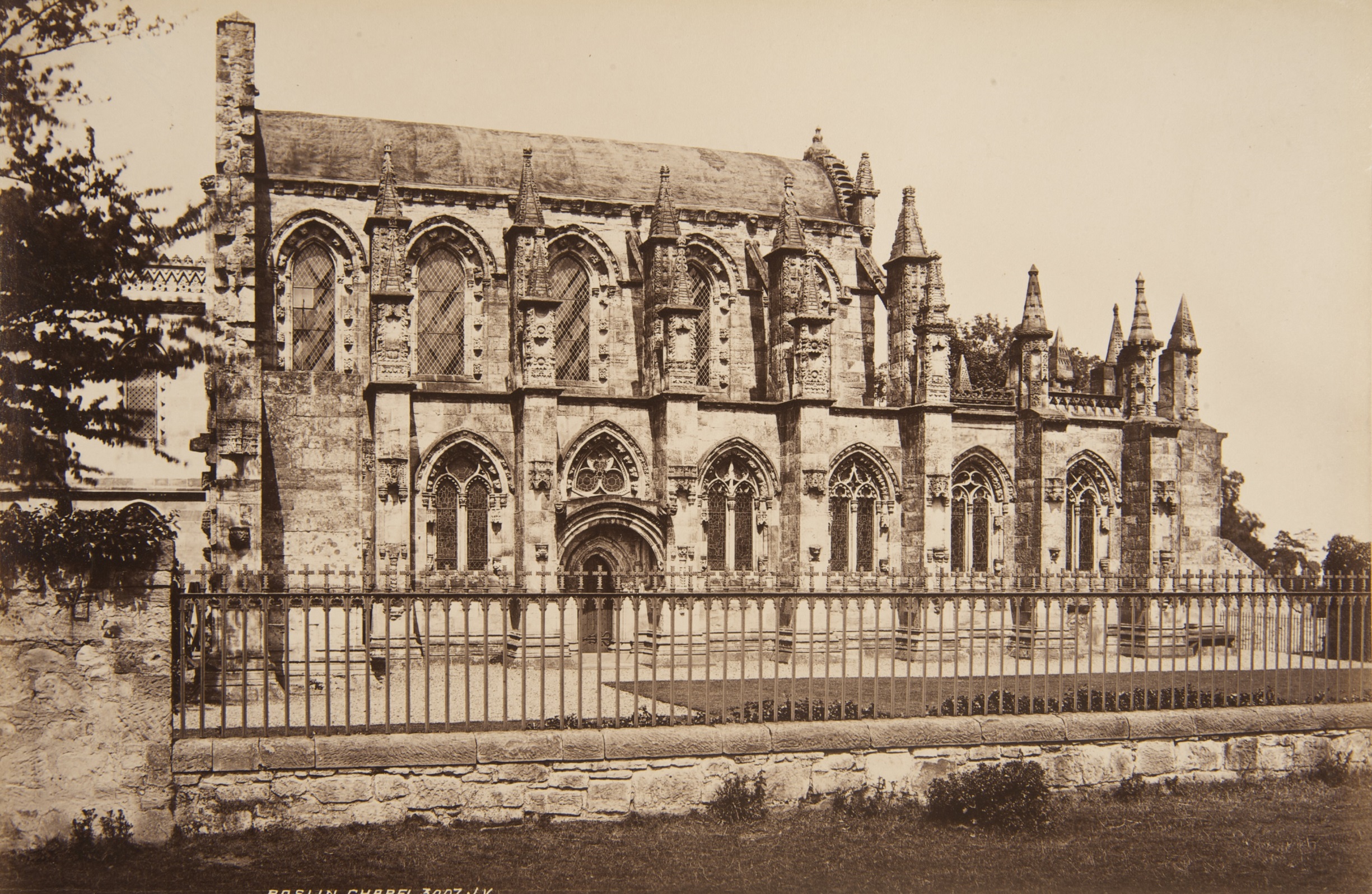
Recording the restoration of Rosslyn Chapel
The restoration of the chapel was of particular interest to architectural publisher and antiquarian John Britton (1771-1857). Britton compiled a collection of drawings, engravings and manuscripts relating to the chapel and bound them into a book.
The Rosslyn Album includes correspondence between artist David Roberts and Britton on the restoration and history of Rosslyn Chapel. The papers also contain the views of Britton’s circle of correspondents including George Meikle Kemp, architect of the Scott Monument and Sir Walter Scott himself. The letters highlight how passionately architects and artists alike felt about the building and the regard in which Rosslyn Chapel was held.
For many years the book was in private hands, but in 2021 the book went to auction and we purchased it with the assistance of the Friends of the National Libraries.
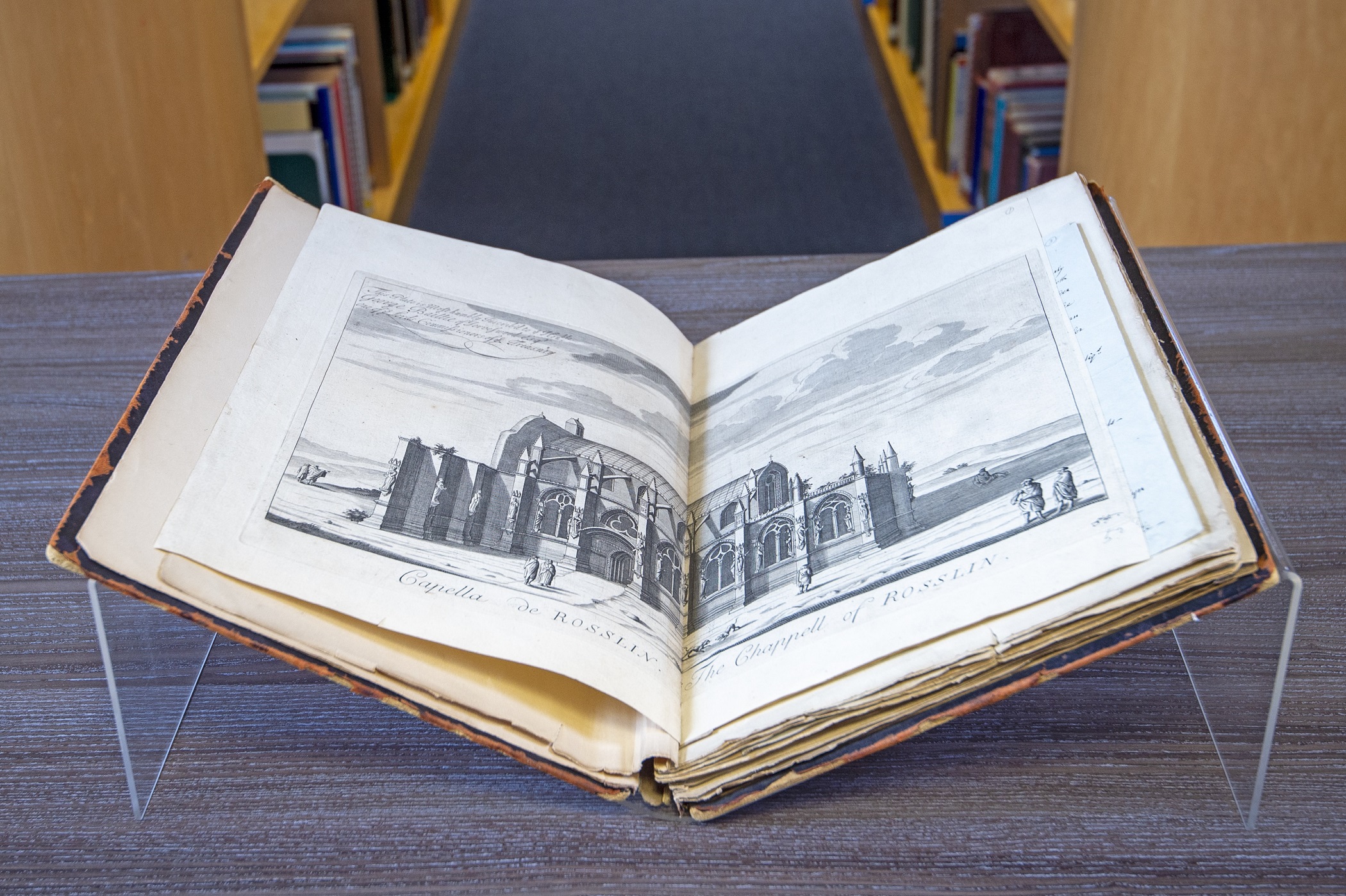
Engraving of Rosslyn Chapel within the book
I was lucky enough to be one of the first people to see the newly acquired volume about Rosslyn Chapel, and I was captivated by the beautiful images of the chapel, and by the letters debating the history and restoration of the chapel.
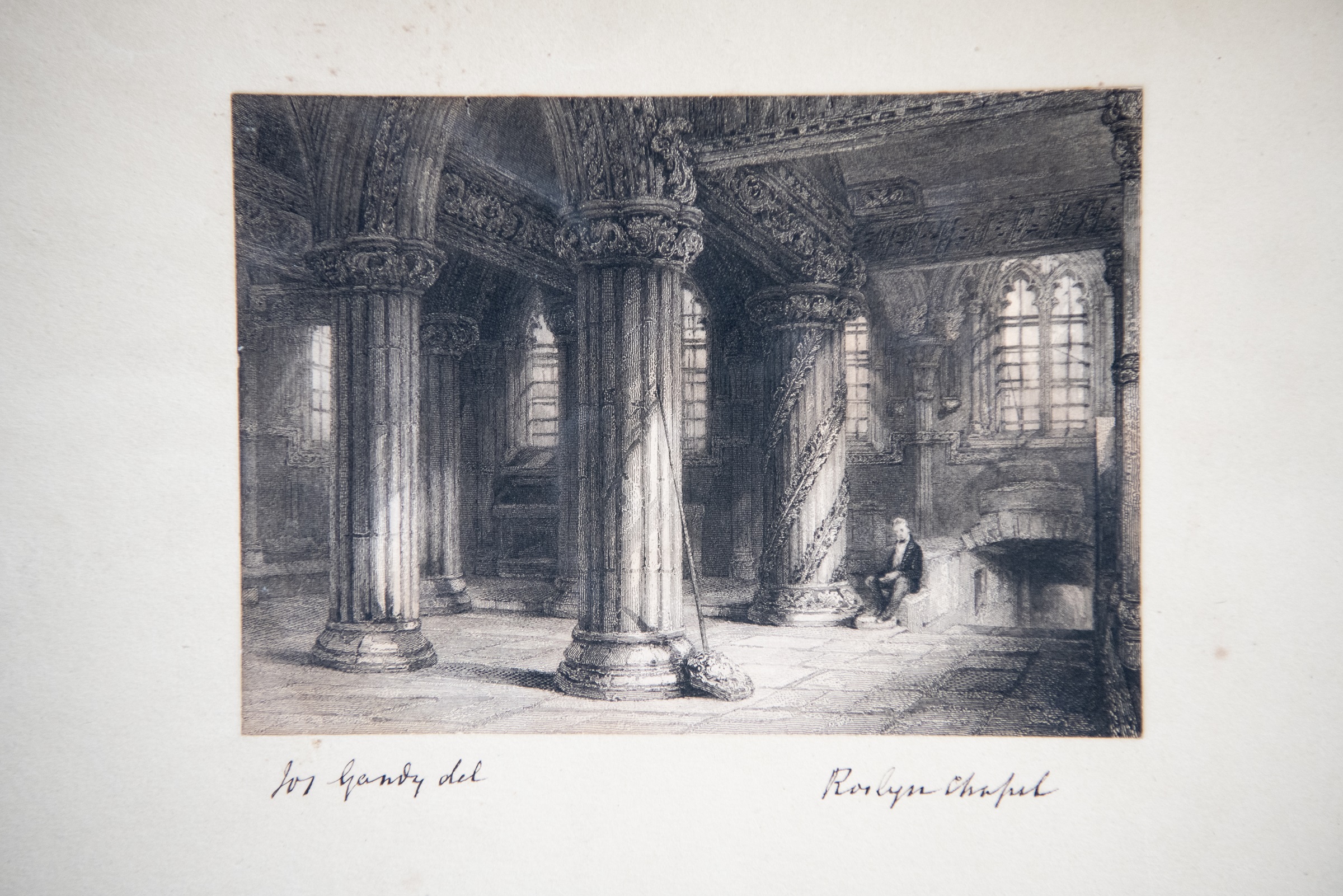
An engraving of Sir Walter Scott pictured in the interior south east corner of Rosslyn Chapel held within the book
The book was in very poor condition and it was really difficult to handle with the cover partly detached from the pages and lots of loosely attached letters and drawings inside.
Bringing the Rosslyn Album back to life
The volume is not standard in any way. The pages are a variety of sizes, there are some fold outs and lots of letters and drawings fastened to the pages in a variety of quirky ways. There is no traditional stitching and the pages were held together with a few loops of thread.
We knew straight away that the book needed conservation work before we could exhibit it or make it available to our visitors.
As a paper conservator for Historic Environment Scotland (HES), my expertise lies in the conservation of drawings, plans and photographs. I do have some book conservation experience, however, I am not a formally trained book conservator. Because of the unique nature and importance of the Rosslyn volume, we asked an accredited book conservator for help.
We decided to approach the treatment a bit differently where I would have the opportunity to learn some valuable book conservation skills while assisting the book conservator Caroline Scharfenberg from Book and Archive Conservation Limited with the specialist work on volume in her studio.

Conservators at work. On the left: Paper Conservator Lynn Teggart. On the right: Caroline Sharfenberg Book Conservator undertaking work on the volume
What did the conservation treatment involve?
The first step in the treatment was to unbind the book. It was so loosely held together that it needed a new sewing structure to make the book strong enough to be handled for the long term.
Pages were cleaned with a vulcanised rubber sponge called a smoke sponge which helps to lift the dirt off the surface of the pages.
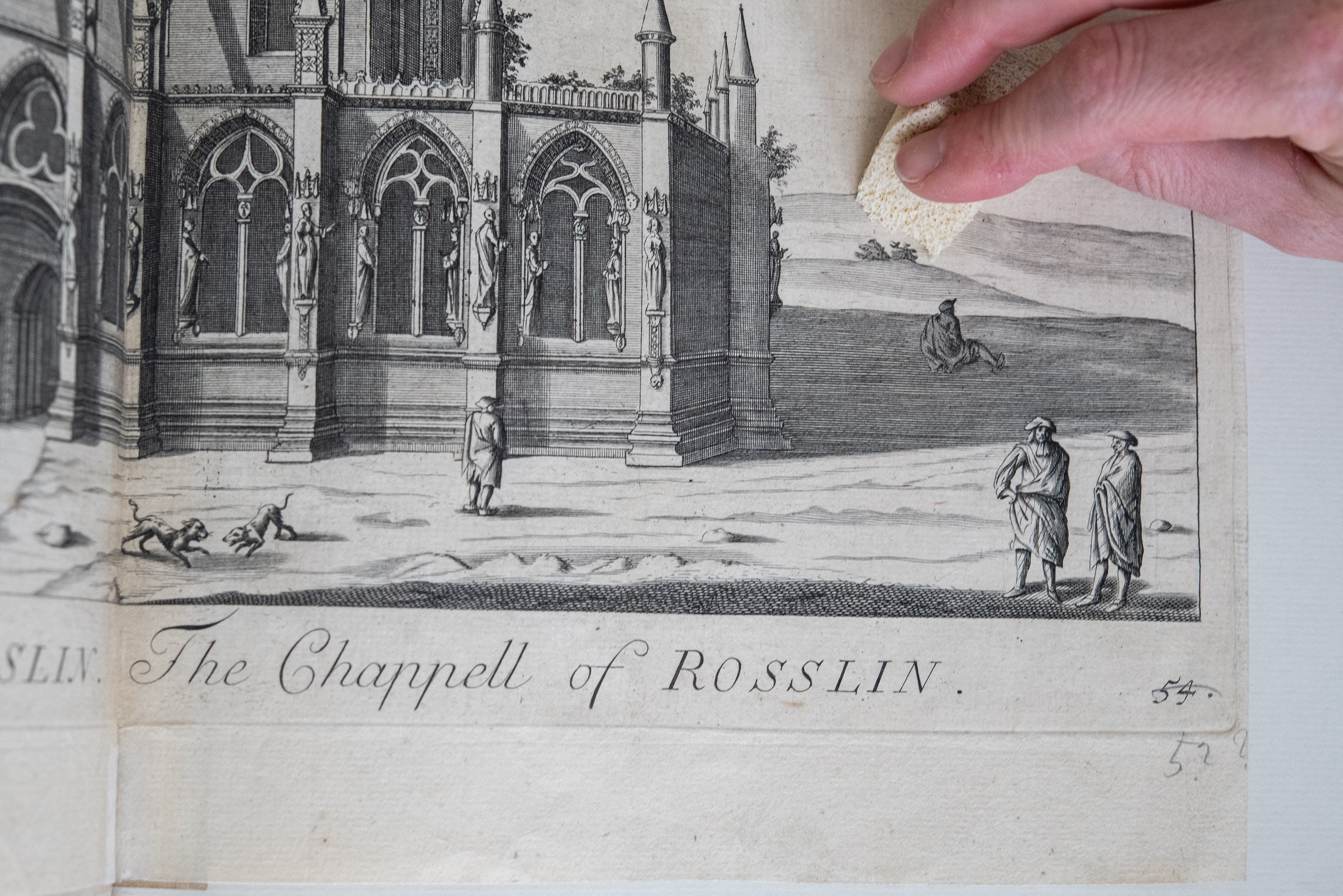
We removed the surface dirt on the page of the book with a smoke sponge
We repaired the tears with Japanese paper and wheat starch paste. Japanese paper has long fibres but is thin and transparent so it makes great repair paper.
Wheat starch paste has been used in Japanese scroll mounting for hundreds of years, therefore, we know that it has great ageing properties.
Letters loosely attached had additional transparent Japanese paper hinges applied to give them strength but can barely be seen!
The Rosslyn album in front of the lens
Photographing books can be tricky, especially with some of the unique methods used to attach the letters and drawings to the pages in this book. For this reason, we took a pause on the conservation to photograph the contents of the book in great detail to make it available on our online catalogue Canmore.
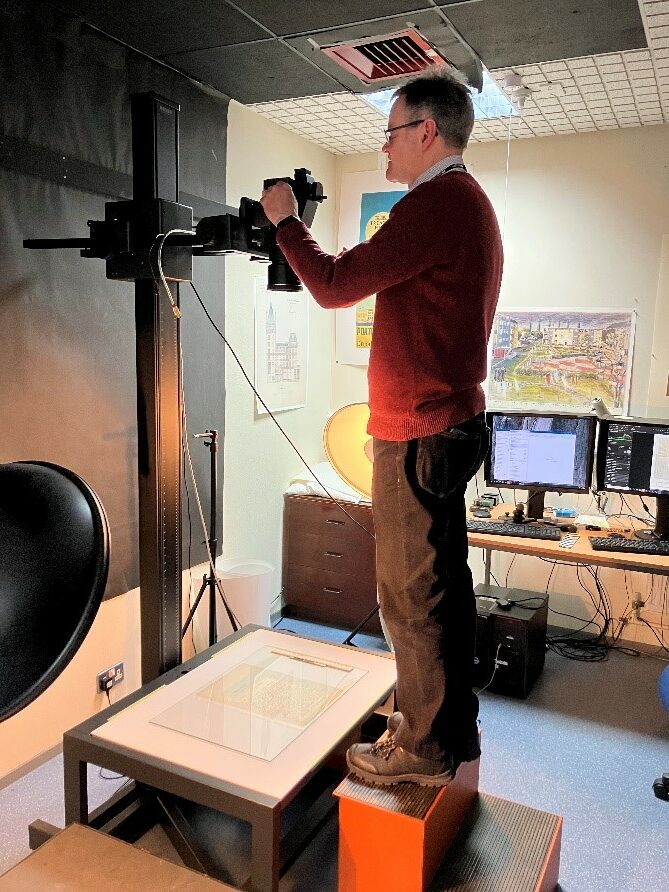
Our photographer Derek Smart photographing a page from the album.
Rebinding the album
We applied Japanese paper strips to the papers. This was used to create groupings of pages called sections which could be sewn with thread. Once all the sections were made, the book was sewn onto linen strips. Then, we lined the spine with several layers of paper and adhesive to give the text block strength.
Once the text block was repaired, the cover was reattached. Large parts of the spine were missing and, therefore, a new one was created with layers of toned Japanese paper. We coated it with wax to give it a similar appearance to the leather on the cover.
The leather on the covers was fragile and flaking. This was consolidated with adhesives. We repaired the split corners with more toned Japanese paper.
Now that the conservation of the book is complete, it can be handled more easily with less risk of damage to the contents while being viewed.
What happened next?
Once the conservation of the book was complete it was all go in the archive. Our Archivist Megan Young transcribed the tricky-to-read letters and the images and transcriptions of the pages are now available online on Canmore.
Another collaboration has been with Alasdair Burns, our Publishing Officer, who worked to compile the images into a book. We have had two copies of this printed and bound. One of the books has been gifted to the Rosslyn Chapel Trust for their records and as thanks for their support and advice in purchasing the book. We will keep the second at the HES Search Room for visitors wishing to access the contents of the book.
Exhibition of the Rosslyn Chapel Album
We are very excited to be displaying the book as part of our current exhibition Rosslyn Chapel & Scottish Antiquaries which opened to the public on Friday 29 of September this year and will run until end of September 2024. We will display a new page in the book every two weeks. This will help to protect the book from light damage and will give visitors the opportunity to see a fantastic range of contents in the book over the duration of the exhibit.
Fran Baseby, our Deputy Head of Archives, brought the exhibition together. I have been supporting her by preparing stands for the books going on display.
Come along and see the amazing treasures in this exhibition. See you there!
Follow for more!
From awkward archives to saving sawmills. there are many more fascinating stories form behind the scenes of our Archives! So why not subscribe to our newsletter and get the latest from our blog straight to your inbox?

